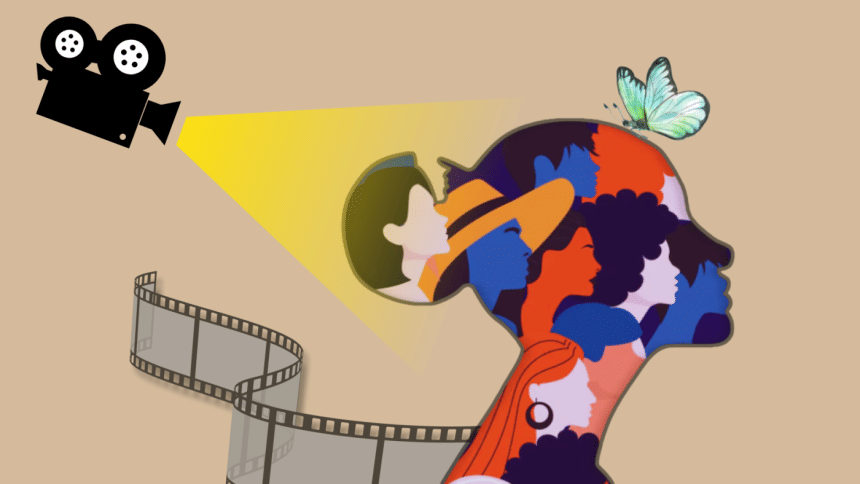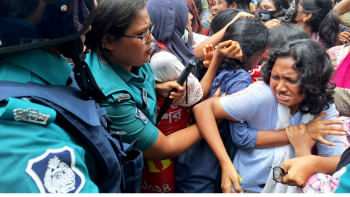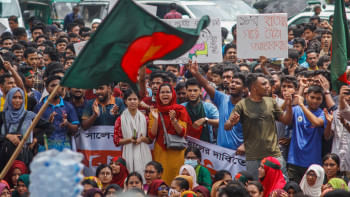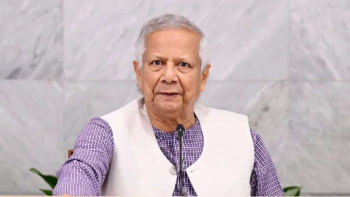Is Bangladeshi cinema finally speaking of women's quiet revolution?

A few weeks ago, as I watched Barir Naam Shahana and Saba in a not-so-packed Dhaka cinema hall, I found myself reflecting deeply on the stories being told. Leesa Gazi's directorial Barir Naam Shahana follows the story of a woman who escapes an abusive marriage in 90's Bangladesh, wants to take control of her own life, defying social stigma and building her own path, while Saba, directed by Tasmiah Afrin Mou, centres on a young woman torn between her duties as a caregiver and her search for spiritual and personal freedom. During the intervals and while leaving the hall, I asked a few women sitting nearby whether they could relate to the stories on screen. Their answers were unanimous.
"Divorce is such a curse," one young woman said quietly. "It's a bigger curse than the trauma from a husband's torture."
At a different hall, an older woman added, "I wouldn't want my daughter to suffer like the girl in Saba. I would rather die."
These reactions made me think: is mainstream cinema finally reflecting the quiet revolutions that women carry out in their daily lives? Are we now seeing women not just surviving but negotiating, claiming, and redefining their freedom?
A quiet revolution is indeed unfolding in the Bangladeshi cinematic landscape through the patient, intimate language of resilience. Films like Rickshaw Girl, Made in Bangladesh, Barir Naam Shahana, Priyo Maloti, and Saba portray women as workers, believers, caregivers, and artists—ordinary people navigating extraordinary pressures of life. Some survive and thrive, while others do not. Each story opens a different window: Naima, the rickshaw painter who disguises her gender to feed her family; Shimu, the garment worker who dares to unionise; Dipa who runs away from an abusive marriage to become a qualified physician; Maloti, who resists moral policing; and Saba, the sole caregiver of her mother. Their resistance is subtle but persistent. They endure, improvise, and make space for themselves in worlds that often deny them. British-Bangladeshi social economist Naila Kabeer referred to this as "the art of survival within constraint." Cinema, by depicting these small but powerful acts, makes visible the negotiations women perform every day.
A recent article titled "Politics of exclusion: Women's political rights and a revolution deferred," published by this daily, highlighted the struggles women are facing in the current socio-political landscape, discussing the national conference of the Forum for Women's Political Rights (FWPR) and the limitations of the July Charter.
A proposal to create 100 directly elected women's seats in parliament was rejected, replaced instead with 50 reserved seats and incremental quotas that will only reach 33 percent women by 2043. This represents an attempt at inclusion without bringing transformation. Women are visible and present in our society, but not empowered. Women's visibility is celebrated as long as it does not disturb established structures, whether in politics or on screen.
Kabeer's book Renegotiating Patriarchy: Gender, Agency and the Bangladesh Paradox provides a useful lens to understand this phenomenon. Women in Bangladesh enter new spaces through work, education, and migration, but their advances often involve bargaining within existing patriarchal rules rather than overturning them. In politics, women gain reserved seats but rarely make decisions. In cinema, women occupy the frame but remain embedded in emotional labour and endurance. Visibility does not equal power. Patriarchy adapts, allowing limited freedoms while retaining control. The narrative, both onscreen and off, often ends in survival, rarely in revolution.
When Naima pedals through Dhaka, when Dipa rests after a day of hospital duties, and when women at the FWPR conference demand direct elections, they are negotiating power. Their labour—moral, emotional, or political—is crucial, yet undervalued. These negotiations are not failures; they are strategic acts within constraints, and every negotiation contains the seed of change. When Shimu speaks in a meeting, Saba questions purity, Dipa reclaims motherhood without marriage, or women at the FWPR demand direct elections—boundaries shift. These acts may seem small, but they redefine what is possible.
True transformation requires seeing women not merely as characters or voters, but as decision-makers, as political subjects with voice and agency. Empowerment is not granted through policy or representation; it is claimed through struggle. Our cinemas have started to portray that claim, and politics must follow.
As I was leaving the hall, one of the young women I had spoken to said, "At least now we can talk about it." Perhaps that is where every revolution begins—in conversation, reflection, and in refusing silence. Until then, whether on screen or in everyday life, Bangladeshi women will continue quietly pushing, negotiating, and redefining what it means to survive, and to claim their power.
Tasmiah T Rahman works at Innovision Consulting and is pursuing a joint PhD programme between SOAS University of London and BRAC University on the political economy of development.
Views expressed in this article are the author's own.
Follow The Daily Star Opinion on Facebook for the latest opinions, commentaries and analyses by experts and professionals. To contribute your article or letter to The Daily Star Opinion, see our guidelines for submission.

 For all latest news, follow The Daily Star's Google News channel.
For all latest news, follow The Daily Star's Google News channel. 










Comments